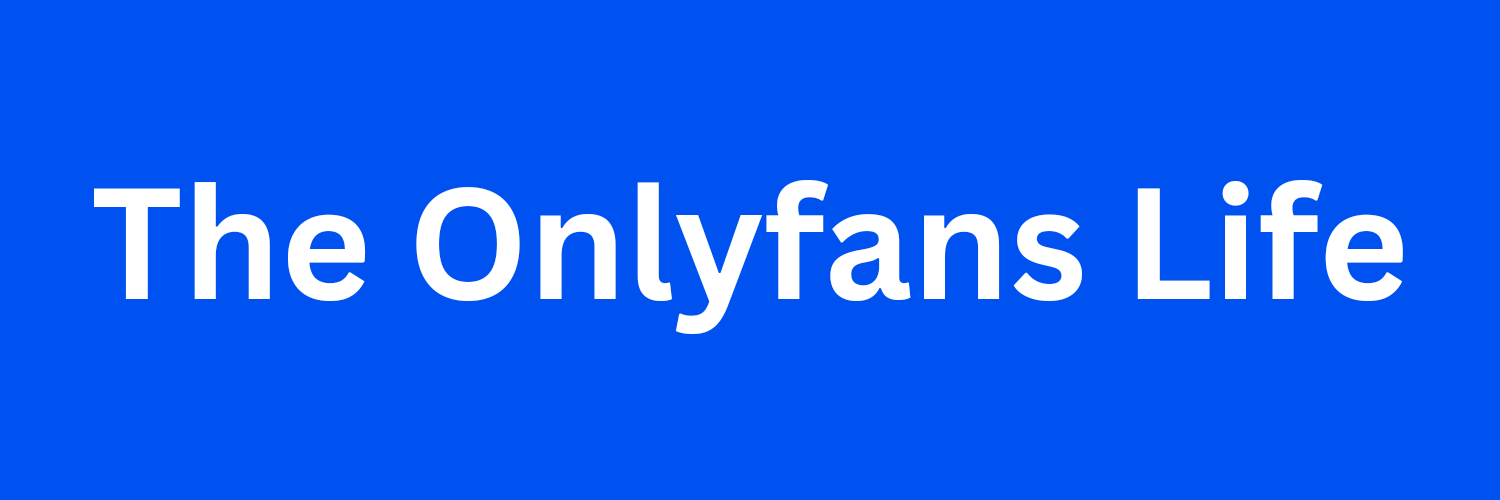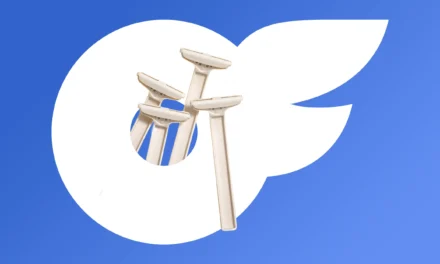The relentless economics of our internet age.
The Frontier Psychiatrists is a daily newsletter. The vast majority of what I write is about health and its associated business struggles. But let’s not kid ourselves; this is entertainment. At best it is education. I consider my subscribers’ fans, but the difference between what I write, which is not only for my fans, and the very paywalled garden that is the website OnlyFans is that on the rest of the Internet, and certainly in my life, individuals other than fans who engaged with the content. Some are apt to be critics. I have a few specific harassers on top of that, but the general tenor of the Internet? I would argue that it is not exclusively made up of fans.
The early decisions made around letting advertising and search engine optimization, run the financial show on the Internet has led to an economy of scamming, trolling, harassment, and selling us shit we don’t need as the primary driver of economic activity.
This morning, I woke up to a text message. Keep in mind, in the top left of this screenshot, you can see the time at which I received this text message. The message asked a question, and the time—on January 1, 2025—answered that question.
Is now a good moment to talk? It’s 9:13 AM on New Year’s Day. No. That is…not…a good time.
Enshittification Loves Company
I presented it here because I feel it lays out a metaphor for the enshitified state of the world in which we live:
Enshittification, also known as crapification and platform decay, is a pattern in which online products and services decline in quality. Initially, vendors create high-quality offerings to attract users, then they degrade those offerings to better serve business customers, and finally degrade their services to users and business customers to maximize profits for shareholders.
There are 1 million other ways this scam could’ve been executed. It’s 9:13 AM. Go with the pig butchering scam? Just ask me how I enjoyed the New Year’s party last night?!?
(my “party” was spending the evening in with my very darling wife Carlene Macmillan while we, as a family, are recovering from what is likely to be norovirus, and watching Gladiator. To be clear, because of the company I was keeping, it was a very, very good New Year’s indeed).
I’ve made a lot of content on TikTok. I have had about 4 million views in the past month. I have made a total of $0.03—and I didn’t exactly waste time and payment processing fee fees rapturing that to my bank account.
In a prior article, colleague David Carreon, M.D. broke down exactly how little our time is worth to the likes of Mark Zuckerberg:
The business model of social media companies like Facebook is to capture attention that could have been sold for at least minimum wage and, in many professionals’ cases, much more. Except—stay with me—they sell it for $1 per hour. That business model is why Meta Platforms is now valued at $1,730,000,000,000 as of the 7th of July, 2024. Taking human attention and selling it for less than it’s worth in any other context. Brilliant.
The advertising driven Internet has generated fabulous wealth for companies like Hooli:
Now, that same attention is cannibalized, digested, and pooped out again, in the quest for AGI and content about celebrities:
Young people are, understabdably, giving up on their dreams. They have taken to killing themselves, at previously unimaginable scale:
Amidst the decline of our modern world, Private Equity funds have decided to “roll up” entire industries. For example, they are acquiring healthcare, housing, and Red Lobster. They suck our blood, extracting endlessly from ordinary people. We can barely keep track how relentlessly we are getting f*cked. Declining well being of young people trapped in this recurring revenue/debt collection vortex follows.
Disconnected and Lonesome
For example, young people are giving up on getting married. They are even giving up on having sex!
This is a little horrifying. It’s perhaps a lot horrifying. Romantic connection is something that’s more and more rare among young people, particularly. The most robust data comes from the CDC. They have an excitingly titled every-other-year Youth Risk Behavior Survey. In 2021, only 30% of high school students have ever been sexually active. About 20% were currently sexually active. High school students are not known for having the best judgment about sexual behavior, which is why this is part of the youth risk behavior survey.
However, if we rewind to 2009, the percentage that had ever been sexually active was 46%. A whopping 34% were currently sexually active.
Young people are giving up on moving out of their parents house, and they’re cheering for murderers in the streets of New York. It’s at least something to do between the hundreds of dates a year you have using either ELO algorithms (Tinder) or a variant of the NRMP match algorithm (Hinge):
Some say apps cheapened the thrill of meeting a prospective partner, rendering everyone disposable; others simply don’t want to keep coughing up a monthly fee to get matched with people they’re interested in. Younger users, in particular, are desperate for fresh alternatives.
Late-stage capitalism sucks for most people. The incentives are sh*tty: Dating apps make more money if you stay on them compared to if you find a match and thusly stop swiping. There’s no financially stable “matching algorithm” for the unstable reality of gaping loneliness that is relentlessly dating. They’re selling users to their investors. In turn, you’re selling your hopes for being anything other than transiently connected with someone else to….those same investors:
[one male user] averages about three dates a week. “It’s gonna sound wild,” he confesses, “but I’ve probably been on close to 200 dates in the last year and a half.”
Perhaps building remarkable technologies to make the world a better place is too difficult? Sucking our attention for pennies an hour? Good enough, the tech bros reason. In order to make real money, in this world, you have to sell something people want.
This very newsletter? It’s a product. Yes, a subscription model. I actually make a non-trivial amount of money writing the this article that you may be reading right now! In the spirit of radical transparency, here are my metrics from this morning:
Yes, I have over $20,000 of recurring annual revenue from this newsletter because people pay to read it. I also write something every single day. It is a real job, and I rarely give myself a day off, lest I loose steam. I’m part of the creator economy, after all.
Substack’s “take rate” is about 10% on the revenue paid to its writers—ahem, “creators.” You know what is a better business? A 20% rate, on content for which people are willing to pay more. This is not a new contention—even furniture makers in the 1500s did a little sexy arbitrage on their wares, as my Apple News “For You” feed reminded me this morning:
Enter: OnlyFans (“OF”).
It’s a website that allows fans to support “creators” who are uncensored…and that means either Nazis (a key demographic here on Substack) or Adult Content (in the case of OF).
Recently, there were a whole slew of sex negative stories about “OF” and a rather charming— just read the interviews with her— Star, Lilly Phillips. Ms. Phillips is British. She may be violating the terms of service of the Airbnbs she’s renting. She has a lot of sex on camera. She employs a staff of something like 9 people. Ms. Philips makes more money than you or I are ever likely to. It’s reportedly on the order of tens of millions of dollars a year. Plural.
She has previously claimed to have made $16,569 in her first month on the adult platform.
That is health insurance CEO money, with only a fraction of the murderous rage! Some assh*le made a whole documentary on YouTube about her recent hundred man in a day, which seemed to have as a thesis “it’s very sad.” You can just search for it on YouTube yourself. I don’t have to link everything for you. I am accepting tips to make custom content links to everything you’d like, however.
The above is Ms. Philips, a woman of whom many disapprove. Here is a random sampling of headlines I got by searching her name:
“She’s just objectifying herself” is the sex-negative consensus. Critics fall all over themselves to take issue with how she makes her content:
However, the film includes scenes that appear arbitrarily placed without proper contextualisation, and others that reek of premeditated phoniness. Although the film exposes the seedy side of the Los Angeles porn industry, it barely answers why Grace Quek is a part of that industry.
Sorry, that was criticism of Annabel Chong, who also has sex with lots of people at once for money—granted she likely made less than Ms. Philips.
One of the earlier articles on this newsletter was written by
, my wife, about the short lived attempt of OnlyFans to ban adult content. You can read that banger here.
If there’s anything we like, as a society, more than shaming women, it’s paying them for the privilege of watching them get naked…
The OFeconomics
That’s what OnlyFans enables. What kind of business is that? A good one. It brought in $6.3 billion in 2023 and paid out $5.3 billion to creators, up 19% from $4.5 billion in 2022.
OnlyFans had a record-breaking year in 2023, generating an eye-watering $658 million in profit before tax…up 25% from the previous year.
This compares favorably with the work of Instagram influencers:
Instagram influencers with fewer than 100k followers earn around $200 per post.
Instagram influencers between 100k – 300k followers may expect to earn around $600 per post.
Instagram influencers with more than 1 million followers earn more than $2000 per post.
Influencers charge around $40-$00 per story, while they charge between $100-$3,00 on average for Instagram Reels.
This also compares favorably with the economics of YouTube:
In the United States, the typical payout for YouTube creators in 2022 hovered around $1,154 weekly, breaking down to about $4,616 monthly. Not too shabby, right? But here’s the kicker: content creators pocket roughly 55% of the ad revenue generated from their videos. So, for every $100 an advertiser shells out, Google passes $55 to the creator.
On average, a YouTuber earns about $0.018 per view. This means hitting 1,000 views on a video could net you around $18. While that might not sound like a fortune, consider the scale. Videos that go viral or consistently attract thousands, if not millions, of views, can lead to substantial earnings over time
On OF, the creators : fans ratio is low:
Out of the 305 million users, approximately 4.5 million accounts are creators. This OnlyFans data tells us that for every creator account, there are approximately 74 fans, giving a 1:74 ratio.
This means that, despite the skew towards the top 1% of creators in terms of revenue, it’s still $1,177/creator ARR on average. Not everyone could or should be a Lily Philips. The average account is small—regular content creation is hard work!
The average OnlyFans creator account has 21 subscribers, but the top 10% of creators generate most of the platform’s wealth.
Even $5/month to subscribe to the “average” account is still $1,260 ARR…not far off the above math using a raw average. In terms of time: revenue, OF compares absurdly well with platforms like TikTok. On the Tok, creators only start monetizing past 10,000 followers (your author is below that threshold):
According to reports from top influencers, TikTok pays around $0.02 and $0.04 for every 1,000 views. These are reports based on payments received through the TikTok Creator Fund.
Thus, to make average-OnlyFans money, a TikTok creator would need 10,000 followers built with no reimbursement in the process and need to crank our absolute bangers that bring in between 31,500,000 to 63,000,000 views. Here is the math:
This is no way to make an easy living. OF compares favorably with the revenue potential from selling trinkets on Temu, which is TikTok’s mainstay of revenue generation:
The exact amount you earn depends on how much content you create and how well it performs. The more you promote Temu, the more rewards you earn. Influencers can earn up to $300 just for having their Temu account approved, then up to $100,000 in affiliate cash each month. Additionally, earn up to a $1000 balance and up to $500 in cash bimonthly.
Content creation is work. Creating content on ad-driven platforms like those owned by Zuck, Leon, The Chinese Government, Gavin Belson, et al, is not a viable way for most people to earn meaningful money to support their lives. On OF, it actually is.
It won’t be a metric ton of money, on average. That is true across endeavors. Most people are not stars. The effort/star power ratio that is needed to support one’s family with fan-funded financials, however, is realistic for more people.
When we rely on advertiser revenue, and the beneficence of the SizzleBergs of the world, we get a worse world. Spotify, anyone? Here is what I have earned as an artist across all streaming music services before fees since 2020.
I’m a tiny music artist. In the past year, that is on just over 100,000 streams.
Being a creative? It doesn’t work, with financials like that! The OF creator economy works for its creators. Unlike, for example, Alma, Grown, and Headway—platforms that, economically, are OF for therapists. To use one recent example, OF can’t just let UnitedHealthgroup collapse one’s revenue at a whim by $6,000 a year like they did to therapists who use the Alma platform. OF doesn’t charge its users a fee to use the product even if it’s financially daft—unlike some of those Telehealth companies. I know what you are thinking—at least therapists aren’t getting (literally) screwed. Except—on OF, creators must consent to what happens to them. It’s part of the terms of service. It’s less clear that informed consent is involved in the relationship between other professionals and the tech platforms they use. So, why the negative valence of the coverage of this one creator platform?
It’s About Hating Women
The demographics of the user base tell the tale:
The creator space is female-dominated, with women making up 84% of all creators on the platform. So, with these numbers, there are approximately 3.78 million women on the platform.
Oh, right. It’s women making money. Now, it’s worth noting the take rate on that platform is exploitative—20% is more than the 10% here on Substack. It’s more than the 7% ish Alma and Grow take. Exploitation of vulnerable individuals—women and trans individuals—making money from sex work is a time honored racket.
It may be that the rest of the creator economy—and even the economy as a whole, has caught up with the exploitation of women doing sex work…but for everyone!
Creators like Ms. Philips know they will get screwed, and by whom. She, at least, isn’t paying interest on educational debt for the privilege. That is a scam too—just ask Emergency Medicine doctors. There are myriad ways to be screwed by corporate overlords. Therapists, empirically, feel taken advantage of by insurance companies, and on and on.
However, we are more than happy to judge women harshly when they make money via their sexuality. We judge business that get anywhere near women’s sexuality. All the while, we ignore the coercive economics behind the rest of our world. Perhaps we could all agree—if we want a different world, that values things other than sex and exploitation? We have to pay for it. We could directly pay for newsletters we enjoy, for example. Or music. Or healthcare. But when we leave it to “others” to pay, far removed from our pocket books, personally? Someone is going to get F-d. It might even be…us.
This post was originally published on this site be sure to check out more of their content.








